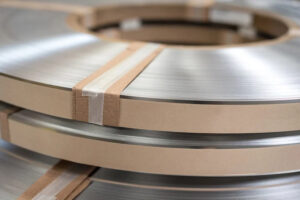What Is a Butterfly Valve? Complete Guide to Types, Components, and Uses
Introduction: What Is a Butterfly Valve?
A butterfly valve is a quarter-turn valve used to regulate flow in pipelines. Its simple construction, compact size, and cost-effectiveness make it a popular choice across industries like pharmaceuticals, dairy, HVAC, chemical processing, and exhaust systems.
In this blog, we’ll explore:
-
What a butterfly valve is
-
Types of butterfly valves (including exhaust butterfly valves)
-
Key components
-
Comparison with butterball valves
-
Use cases in different industries
Types of Butterfly Valves
Butterfly valves come in various designs to suit specific applications. Below are the most common types:
1. Wafer Butterfly Valve
Most common type, clamped between two flanges. Suitable for general-purpose flow control.
2. Lug Butterfly Valve
Includes threaded inserts on both sides of the body, allowing disconnection of one side without affecting the other.
3. Double Offset (High Performance)
The disc is offset from the centerline, reducing wear and allowing for tight sealing in high-pressure conditions.
4. Triple Offset Butterfly Valve
Offers zero leakage, commonly used in high-temperature and critical services.
5. Exhaust Butterfly Valve
Specially designed for controlling exhaust gas flow in automotive and industrial engines. These valves must withstand high temperatures and corrosive gases.
Butterfly Valve Components
A butterfly valve is composed of several key parts:
-
Body: Houses the internal components
-
Disc: Controls the flow by rotating 90 degrees
-
Seat: Provides a seal to prevent leakage
-
Stem (Shaft): Connects the disc to the actuator
-
Actuator: Manual or automatic (pneumatic/electric) controller
Butterfly Valve vs. Butterball Valve
Some people confuse butterfly valves with butterball valves, but they are distinct:
| Feature | Butterfly Valve | Butterball Valve (Ball Valve) |
|---|---|---|
| Operation | Quarter-turn disc | Quarter-turn ball |
| Best for | Throttling and isolation | On/off control |
| Cost | More affordable | Generally more expensive |
| Flow Restriction | Slight when open | Minimal when fully open |
Conclusion: If you need fast and reliable isolation with low pressure drop, a butterball valve might be suitable. However, for cost-effective throttling in large-diameter systems, go with a butterfly valve.
Common Applications of Butterfly Valves
-
Food and Dairy Processing: Used for sanitary flow control
-
Pharmaceutical Systems: Clean-in-place designs maintain hygiene
-
HVAC Systems: Regulate air and fluid flow
-
Automotive Exhaust Systems: Exhaust butterfly valves help manage emissions
-
Water Treatment Plants: Reliable flow control in large pipelines
Conclusion: Choose the Right Butterfly Valve for Your System
Whether you’re managing air, gas, or liquid systems, selecting the right butterfly valve ensures efficiency and safety. From exhaust butterfly valves to sanitary applications, these versatile components offer excellent control and value.


